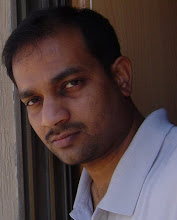The mundu (pronounced [muɳɖɨ]) is a garment worn around the waist in Kerala and Maldives related to the Dhoti as well as the Lungi. In South Canara, a district of Karnataka state, the Tulu speaking folk and Beary community wear the mundu. It is normally woven in cotton and coloured white or cream. The colour is dependent on whether the cotton is bleached or unbleached. A kaddar mundu is made using handlooms. When unbleached, the mundu is called a neriyathu. In modern times, two types of mundu are prevalent - the single and the double. A single mundu is draped once around the waist, while the double is folded in half before draping. A mundu is usually starched before use.
Men
A mundu usually has a line of comparatively thicker cloth woven into it near the border called the kara. The kara can be coloured and comes in various sizes. There are also double coloured and ornamental kara (a strip of colour at the end of the mundu). For more ceremonial occasions (like weddings), a mundu has a golden embroidery known as kasavu. The wearer highlights the kara by carefully folding the end of the mundu. The kara generally appears on the right hand side of the person, though styles with the kara on the left side are prevalent. Unspoken rules of etiquette govern the way the mundu is worn. Men will often fold the garment in half to resemble a short skirt when working, cycling, etc., but it is considered disrespectful to speak to women or one's social superiors with the mundu folded up this way, revealing the legs from the knee down. When faced with such a social situation, the fold of the mundu is loosened with an imperceptible flick and it flutters down to cover the legs completely. Very rarely, some men might fold their mundu very short revealing the shirt, although it's not always appropriate to do this.
Women
Traditional dress of Kerala. A Malayali woman in a set-sari (tradition being wearing a mundum neriyathum) and a Malayalee man wearing a mundu with a shirt (tradition being not wearing a shirt).A variant called a mundum-neriyathum is used more often by women. The mundum-neriyathum is a set of two mundus, both having matching kara. The set contains a lower garment similar to the those worn by men. The upper mundu, worn with a blouse, is wrapped once around the waist and upper body and left hanging from the left shoulder, resembling a saree. This is often called a set-mundu. This is usually worn during festivals or special occasions.
In Kerala a veshti is a small piece of cloth (generally put on the shoulders) along with a mundu, for formal occasions.
Kerala Lungi
In Kerala the Lungi, locally known as Kaili or Kalli Mundu, is worn by both men and women. It is considered a casual dress or working dress of physical labourers. Lungis are generally colourful, and with varying designs. The plain white version of a lungi is known as a mundu. For more ceremonial occasions (like weddings), mundus often bear a golden embroidery known as kasavu. Lungis are not used during occasions such as weddings or other religious ceremonies. Saffron-coloured mundus are also known as kaavi mundu.





No comments:
Post a Comment